Abstract
A procedure for screening several thousand clones for alterations in a specific gene product was apapplied to mutagenized cultures of Dictyostelium discoideum. Six strains were recovered which had less N-acetylglucosaminidase (EC 3.2.1.30) than the wild type. In addition, we isolated four strains in which the enzyme was temperature-sensitive. The enzyme from one of these strains had an altered substrate affinity.
N-Acetylglucosaminidase is present at a low level in cells grown on bacteria and increases up to 10-fold during the aggregation stage of development. The enzyme appears to be essential to maintain migrating pseudoplasmodia of normal size, as shown by the fact that all of the mutant strains which accumulate very little N-acetyl-glucosaminidase formed only small migrating pseudoplasmodia containing less than 10% the number of cells found in the wild-type pseudoplasmodia. The small pseudoplasmodia migrated at less than a third the rate of wild-type pseudoplasmodia and ultimately formed diminutive fruiting bodies. N-Acetylglucosaminidase thus appears to be a developmental enzyme that functions during the migration stage.
Keywords: temperature-sensitivity, mutagenesis, developmental control, multiple pipette
Full text
PDF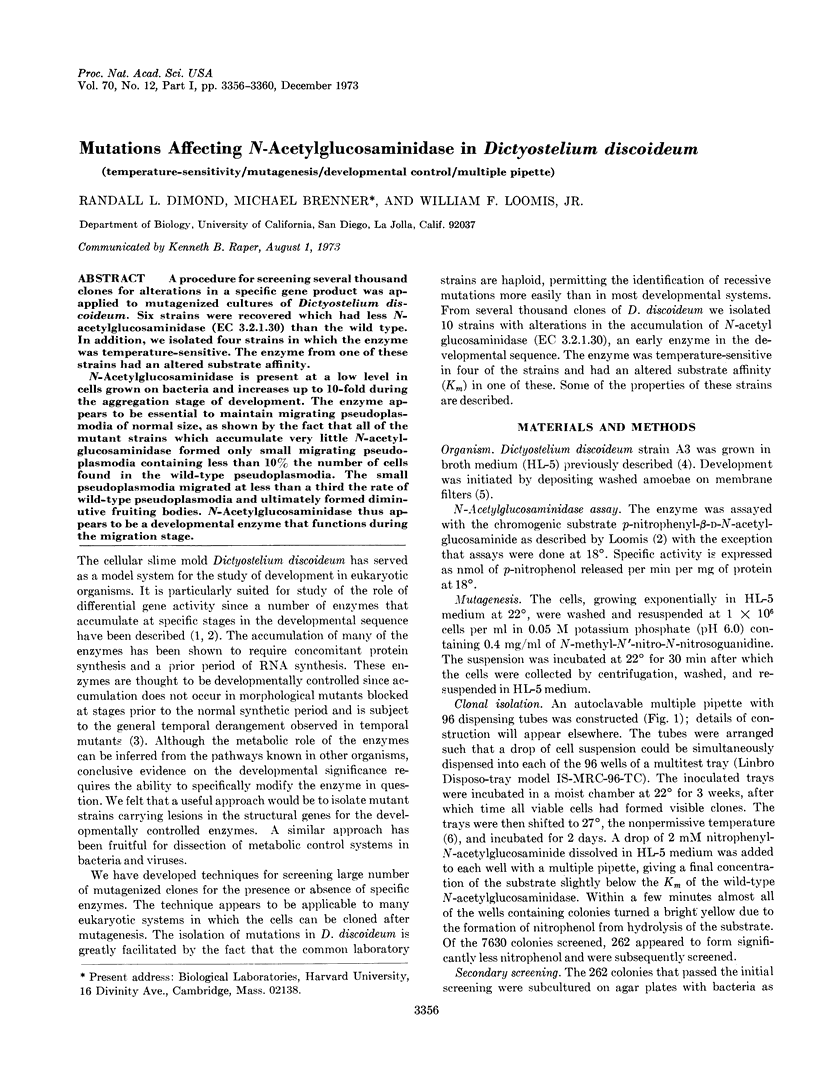
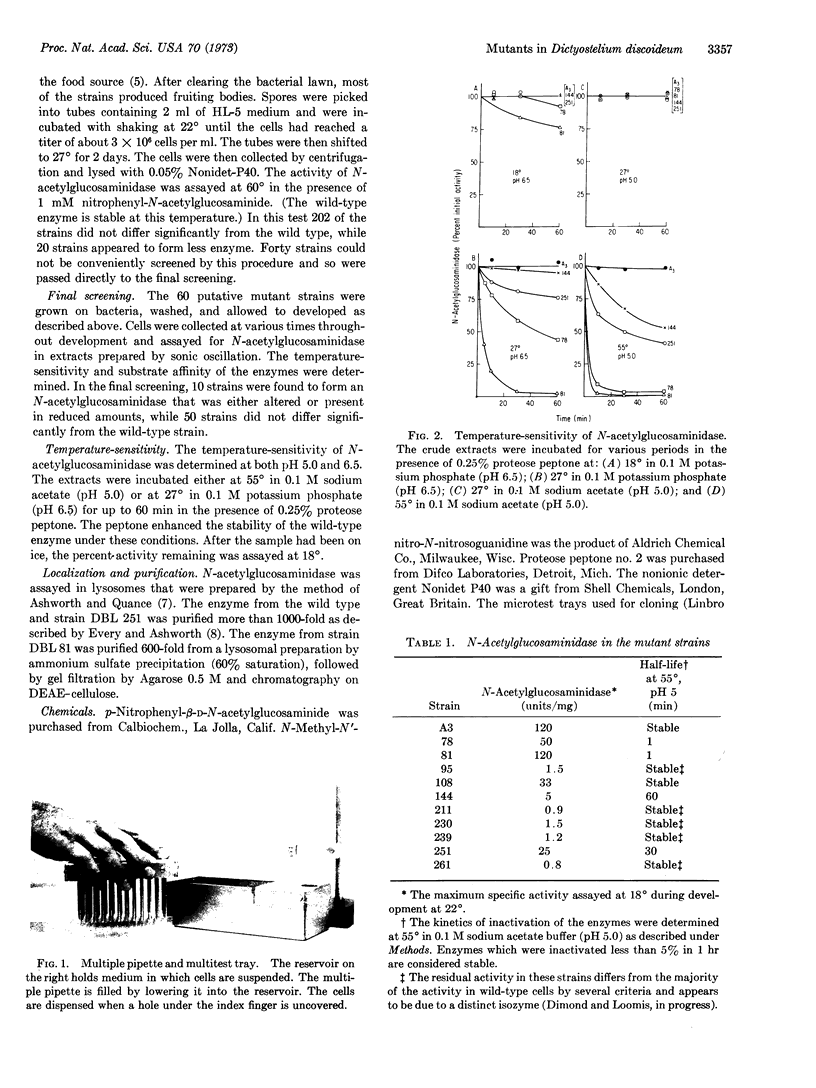
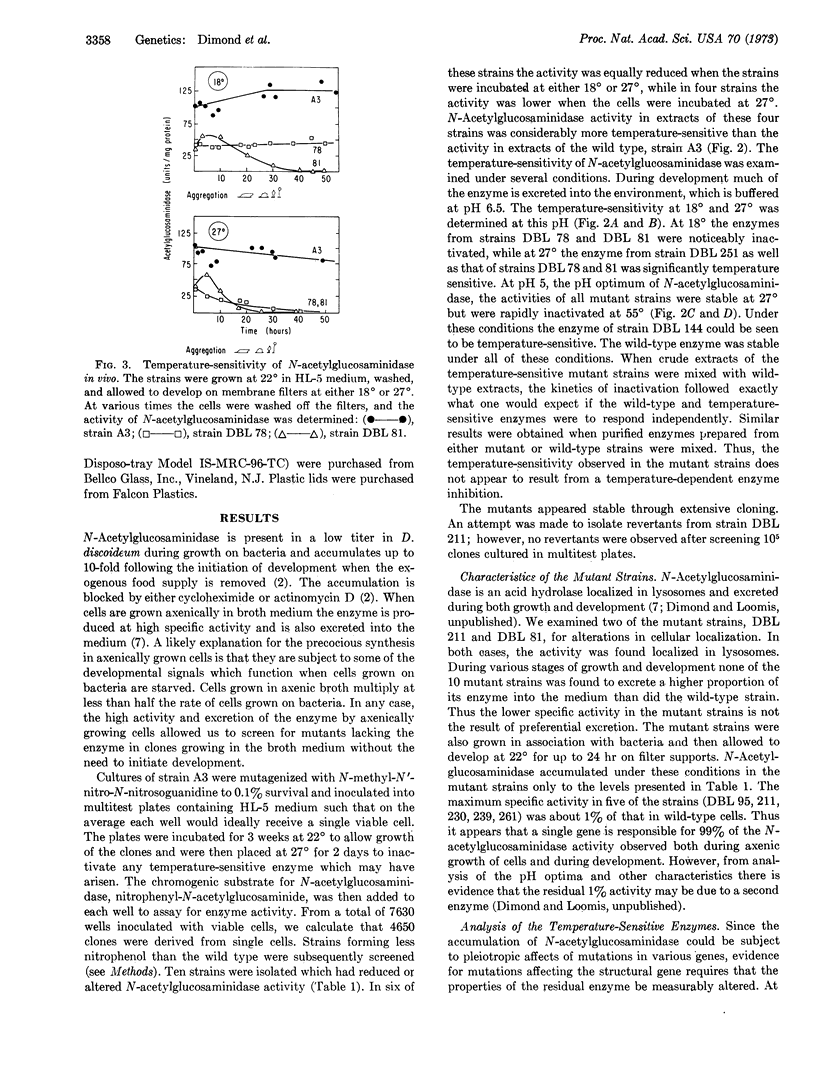
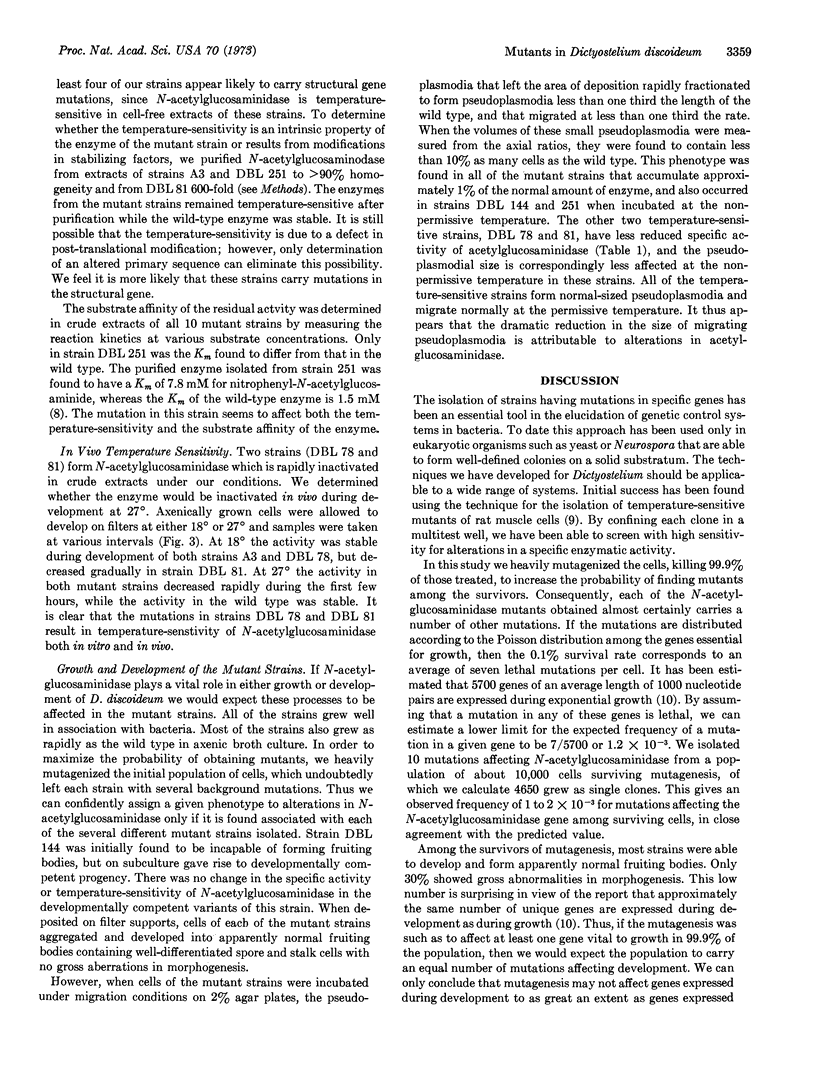
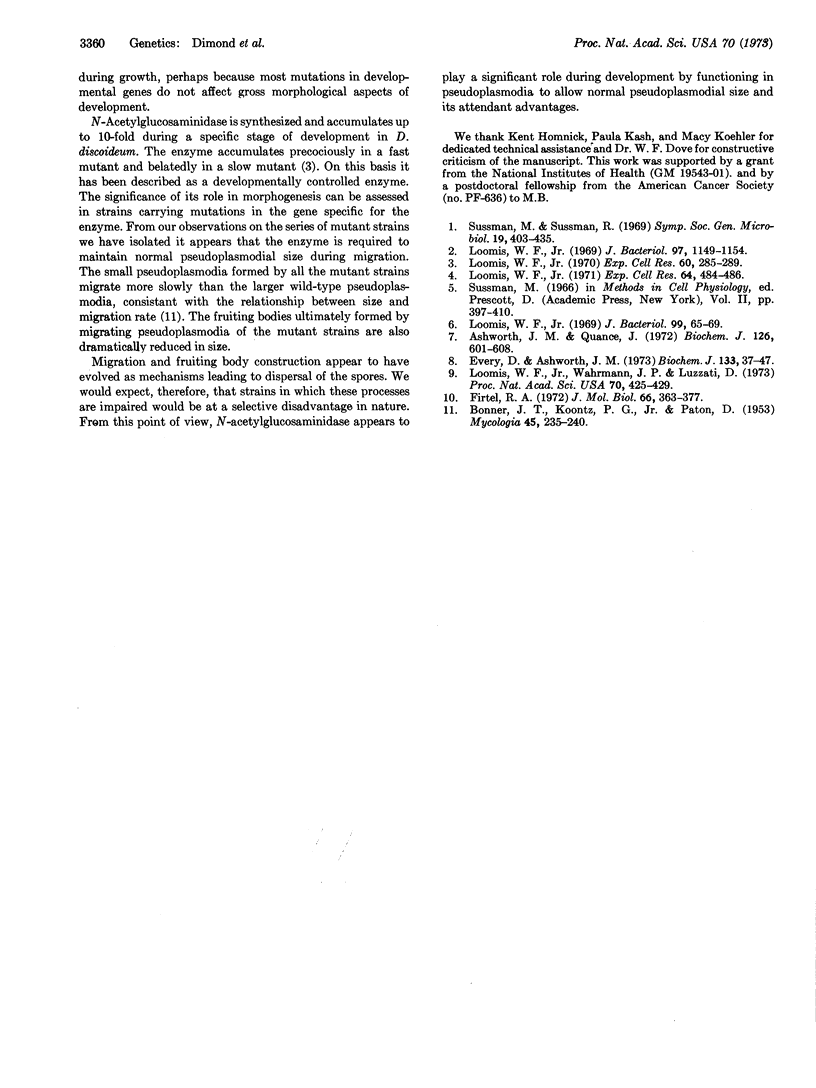
Images in this article
Selected References
These references are in PubMed. This may not be the complete list of references from this article.
- Ashworth J. M., Quance J. Enzyme synthesis in myxamoebae of the cellular slime mould Dictyostelium discoideum during growth in axenic culture. Biochem J. 1972 Feb;126(3):601–608. doi: 10.1042/bj1260601. [DOI] [PMC free article] [PubMed] [Google Scholar]
- Every D., Ashworth J. M. The purification and properties of extracellular glycosidases of the cellular slime mould Dictyostelium discoideum. Biochem J. 1973 May;133(1):37–47. doi: 10.1042/bj1330037. [DOI] [PMC free article] [PubMed] [Google Scholar]
- Firtel R. A. Changes in the expression of single-copy DNA during development of the cellular slime mold Dictyostelium discoideum. J Mol Biol. 1972 May 28;66(3):363–377. doi: 10.1016/0022-2836(72)90420-2. [DOI] [PubMed] [Google Scholar]
- Loomis W. F., Jr Acetylglucosaminidase, an early enzyme in the development of Dictyostelium discoideum. J Bacteriol. 1969 Mar;97(3):1149–1154. doi: 10.1128/jb.97.3.1149-1154.1969. [DOI] [PMC free article] [PubMed] [Google Scholar]
- Loomis W. F., Jr Sensitivity of Dictyostelium discoideum to nucleic acid analogues. Exp Cell Res. 1971 Feb;64(2):484–486. doi: 10.1016/0014-4827(71)90107-8. [DOI] [PubMed] [Google Scholar]
- Loomis W. F., Jr Temperature-sensitive mutants of Dictyostelium discoideum. J Bacteriol. 1969 Jul;99(1):65–69. doi: 10.1128/jb.99.1.65-69.1969. [DOI] [PMC free article] [PubMed] [Google Scholar]
- Loomis W. F., Jr Temporal control of differentiation in the slime mold, Dictyostelium discoideum. Exp Cell Res. 1970 May;60(2):285–289. doi: 10.1016/0014-4827(70)90516-1. [DOI] [PubMed] [Google Scholar]
- Loomis W. F., Jr, Wahrmann J. P., Luzzati D. Temperature-sensitive variants of an established myoblast line. Proc Natl Acad Sci U S A. 1973 Feb;70(2):425–429. doi: 10.1073/pnas.70.2.425. [DOI] [PMC free article] [PubMed] [Google Scholar]



